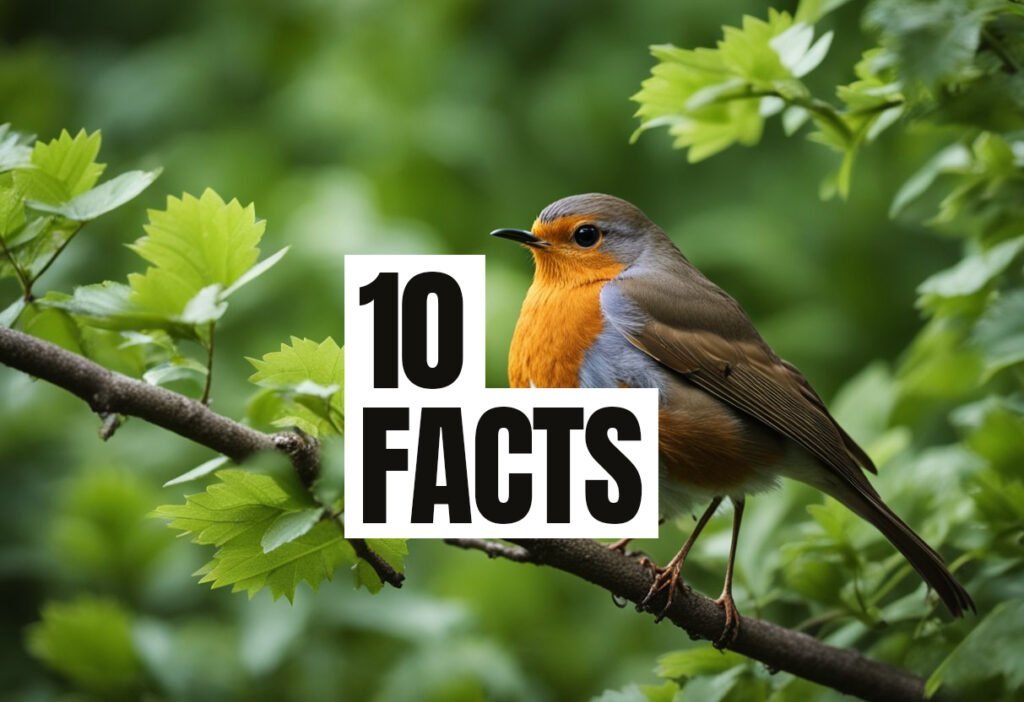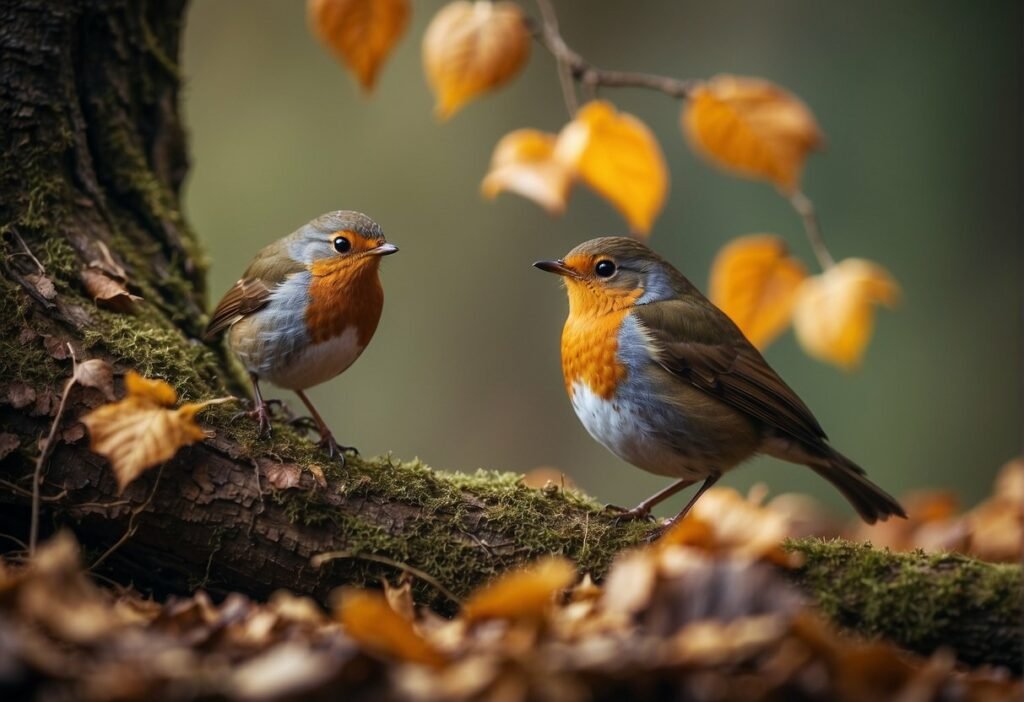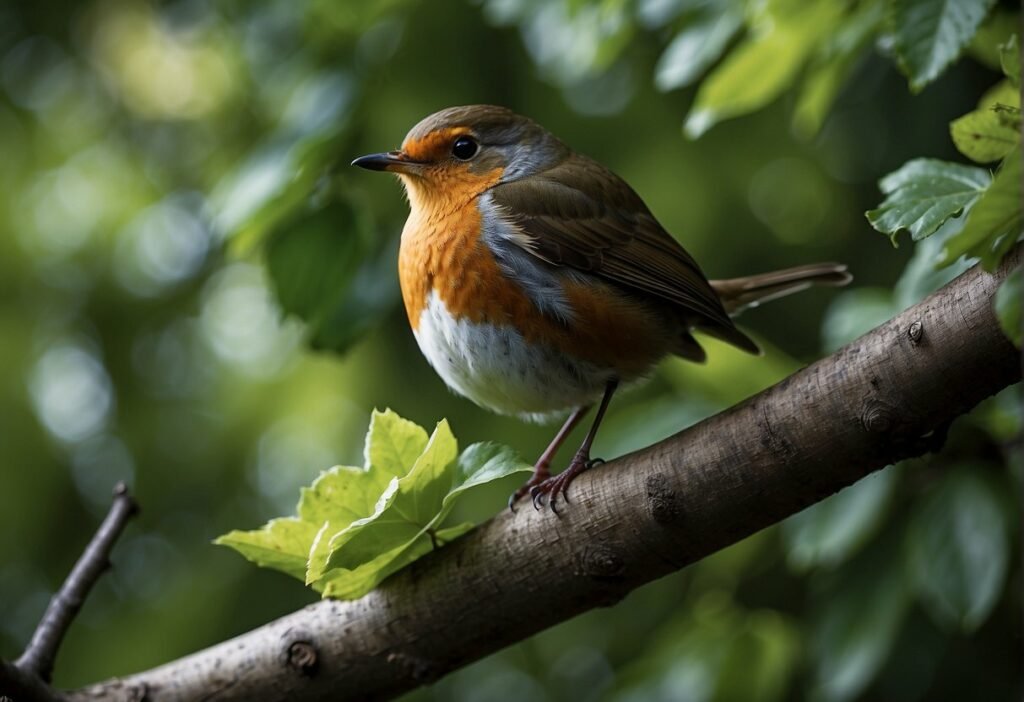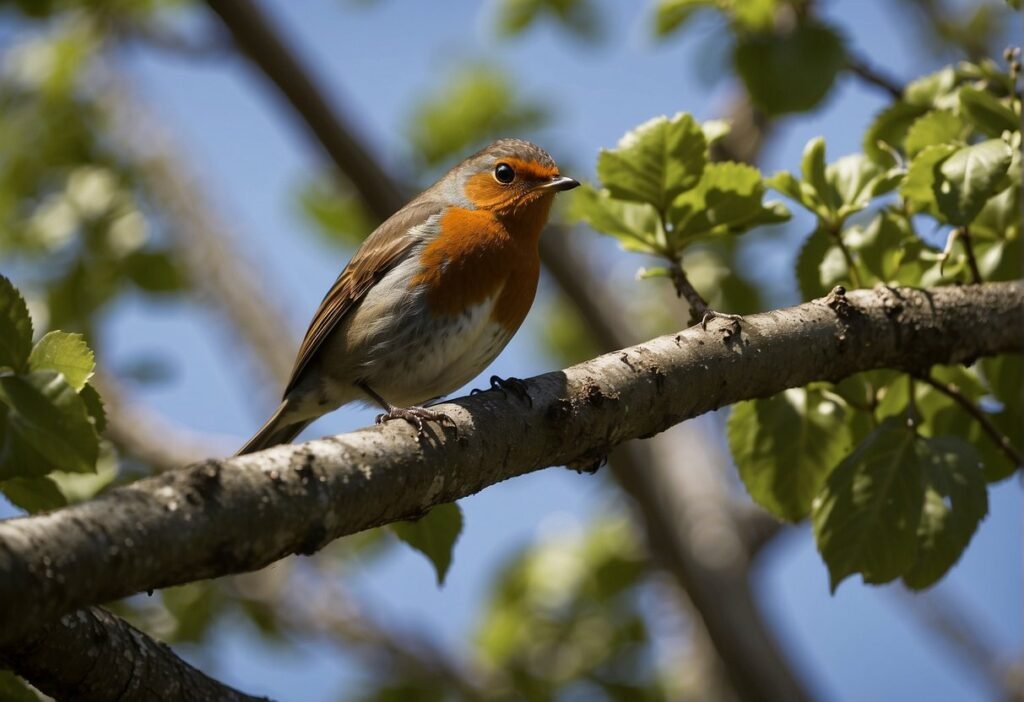The Symbolic Meaning of Robins
Robins have long been a subject of fascination and intrigue, symbolizing various themes and emotions in different cultures. Their presence is often imbued with deep symbolism, ranging from renewal and rebirth to transformation and good fortune.
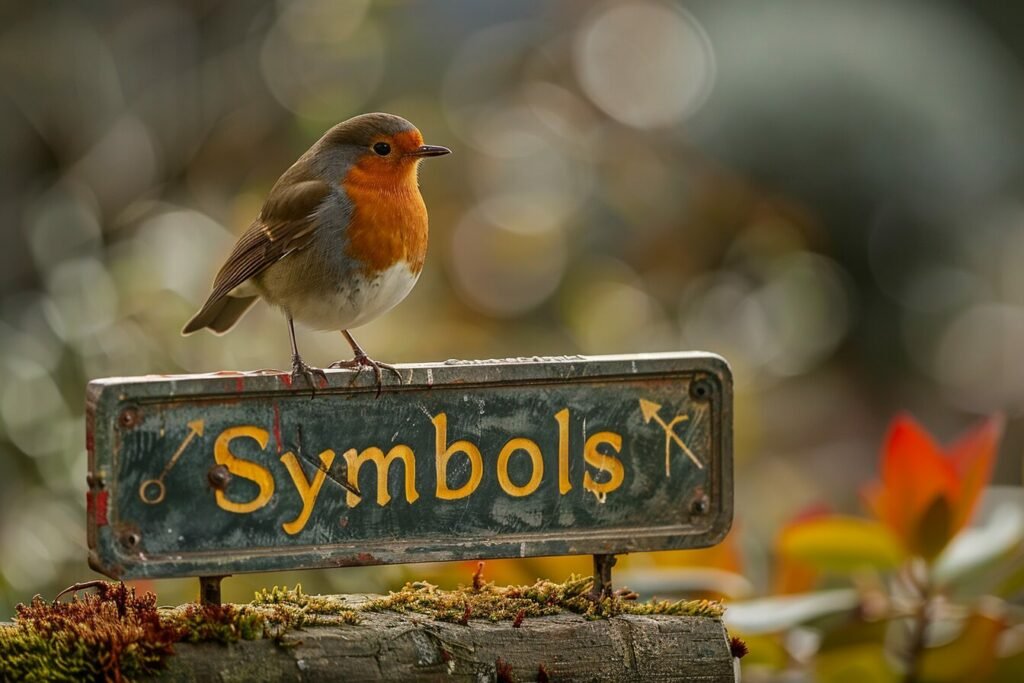
- Renewal and New Beginnings: The robin is often considered a symbol of spring, a time of rebirth and new beginnings. Their arrival is usually associated with the end of winter and the onset of a fruitful and vibrant spring.
- Messenger of Transformation: In many cultures, the appearance of a robin is seen as a message from the spiritual realm. It is believed to symbolize transformation and the start of a new phase in life.
- Symbol of Joy and Hope: With their bright red breast and cheerful song, robins are often seen as bearers of joy and hope. They remind us of the beauty and positivity that surrounds us, even in tough times.
- Outline of Courage and Bravery: Despite their small size, robins are known for their courageous behavior. They often defend their territory with surprising bravery, symbolizing the strength and determination that lies within each of us.
Red Robin in Literature: The Secret Garden
Frances Hodgson Burnett’s classic novel “The Secret Garden” features a robin redbreast as a key symbol that intertwines with the story’s central themes. In this literary context, the robin redbreast is not just a character but a symbol deeply connected to the novel’s protagonist, Mary Lennox.
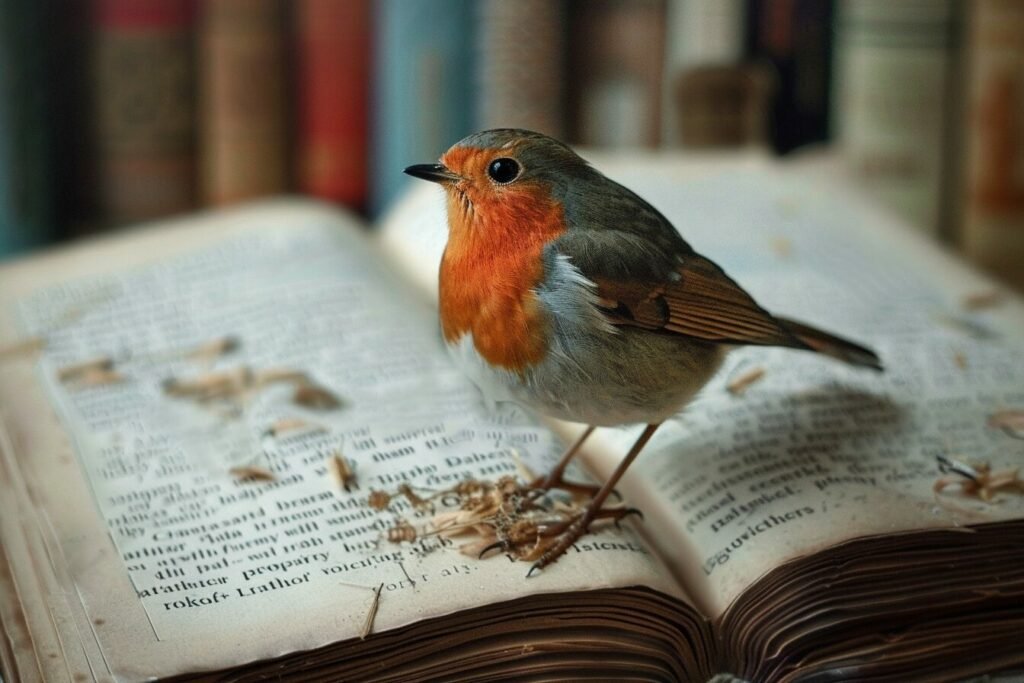
- Symbol of Guidance and Friendship: In “The Secret Garden”, the robin redbreast acts as a guide and friend to Mary. It leads her to the hidden key and the secret garden, symbolizing the unlocking of new worlds and experiences. The robin’s presence marks the beginning of Mary’s transformation from a sullen, lonely child to a nurturing, compassionate individual.
- Reflection of Mary’s Inner Journey: The robin in the novel mirrors Mary’s journey of growth and self-discovery. Just as the robin nurtures its young, Mary learns to nurture the garden and, in turn, herself. The robin’s thriving symbolizes Mary’s own blossoming into a happier, healthier child.
- Emblem of Hope and Resilience: The robin redbreast in “The Secret Garden” is a resilient creature, surviving and thriving even in harsh conditions. This resilience parallels Mary’s own, as she overcomes neglect and loneliness, finding hope and joy in caring for the secret garden.
- Connector between Characters: The robin serves as a connection between Mary, Dickon, and Colin, bringing them together in the garden. It symbolizes the power of nature to heal and unite, a central theme of the novel.
Robins in Folklore and Mythology
The robin holds a special place in folklore and mythology, imbued with meanings and stories that have been passed down through generations. These tales often highlight the robin’s role as a symbol of good fortune, transformation, and spiritual connection.
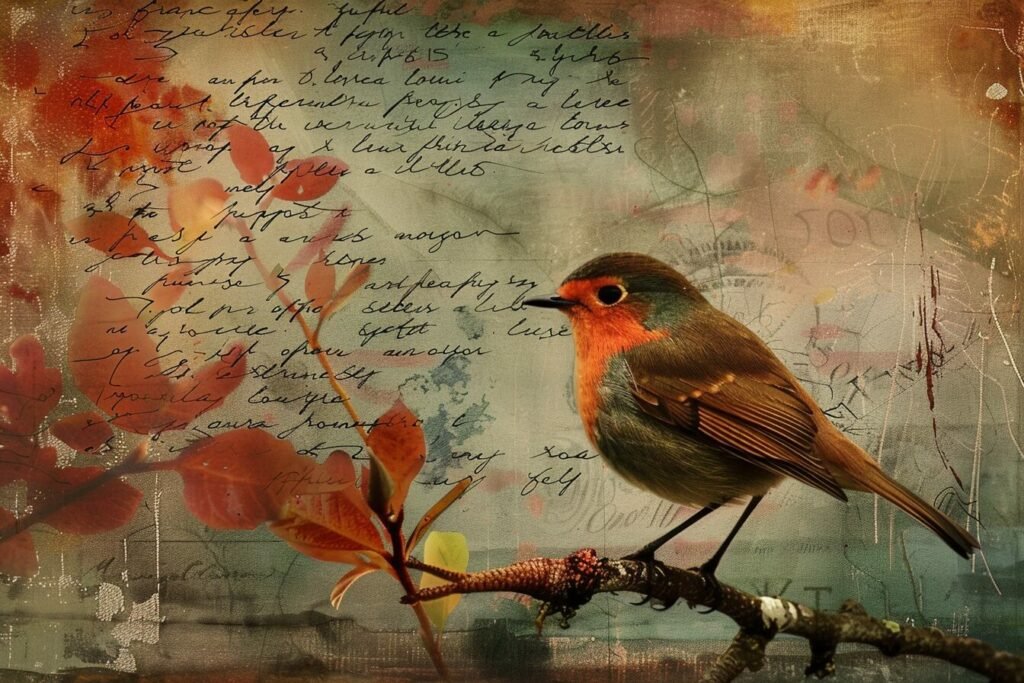
- A Symbol of Good Luck and Auspiciousness: In many cultures, the appearance of a robin is considered a sign of good luck. This belief is rooted in folklore where robins are often portrayed as harbingers of positive change and prosperity.
- Transformation and Renewal: Mythology frequently positions the robin at the center of stories involving transformation and renewal. This is evident in tales where the robin’s appearance heralds the change of seasons, signifying the end of winter and the beginning of spring.
- Messengers from the Spiritual Realm: In various spiritual beliefs, robins are seen as messengers from the spiritual world. Their presence is sometimes interpreted as a sign from the heavens or as a communication from departed souls.
- Robins in Cultural Folklore: Numerous folktales depict the robin as a compassionate and brave character. For example, a popular legend tells of how the robin got its red breast from trying to remove thorns from the crown of Jesus, symbolizing sacrifice and compassion.
- Role in Mythology and Folklore: The robin’s role in mythology is often that of a guide or a wise creature. For more insights into the robin’s place in folklore and mythology, you can explore the link: What Role Do Robins Play In Folkelore And Mythology.
The Red Robin in the United States
The red robin holds a special place in the heart of America, not only as a common sight in backyards and gardens but also as a bird of significant cultural and symbolic value. In the United States, the red robin is celebrated for its cheerful song and vibrant presence, marking its status as more than just a common bird species.
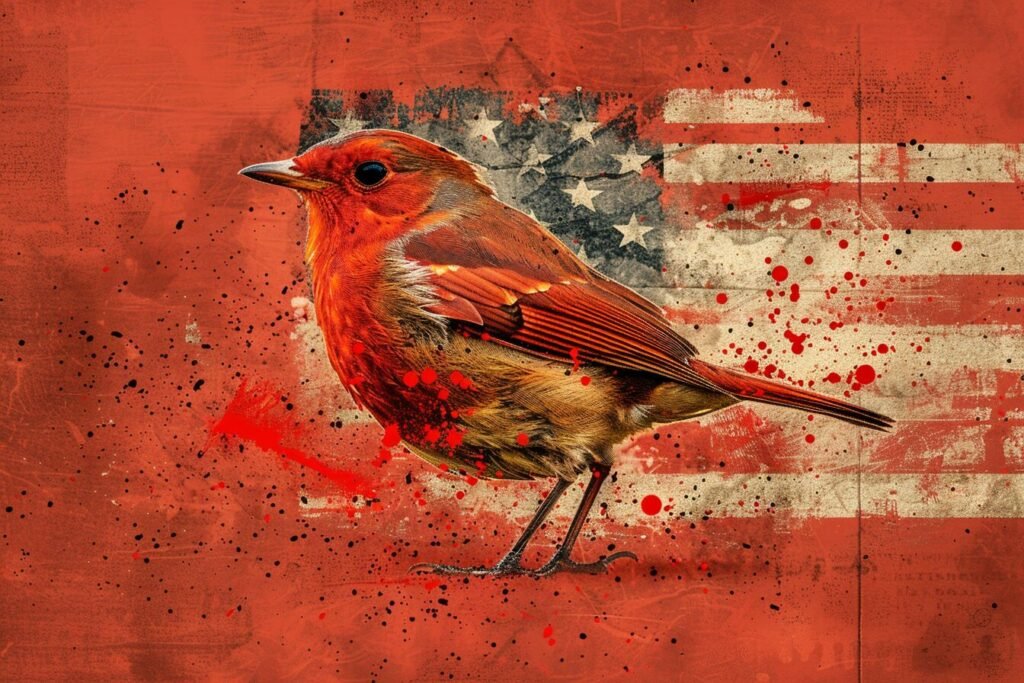
- Cultural Significance: In the U.S., the red robin is often seen as a symbol of joy and the herald of spring. Its arrival is eagerly awaited as a sign of warmer weather and blooming nature.
- Symbolic Representation in the U.S.: The red robin symbolizes renewal and hope in American culture. It is also seen as a friendly and approachable bird, often featured in children’s books and songs.
- American Robins vs. European Robins: While both species share the name ‘robin’, the American robin (Turdus migratorius) is larger and belongs to a different genus than the European robin (Erithacus rubecula). The American robin is known for its orange-red breast and is a member of the thrush family, whereas the European robin is smaller with a more distinct red face and breast. For a detailed comparison, you can visit: What Are The Differences Between American And European Robins.
- The Red Robin in American Folklore: In American folklore, the red robin is often associated with good luck and is seen as a positive omen. Its depiction in stories and tales reflects its status as a beloved and respected creature in American culture.
Robins in Art and Popular Culture
The image of the robin has transcended natural settings to become a prominent symbol in art and popular culture. This bird’s representation ranges from historical folklore to modern media, showcasing its versatility as a cultural icon.
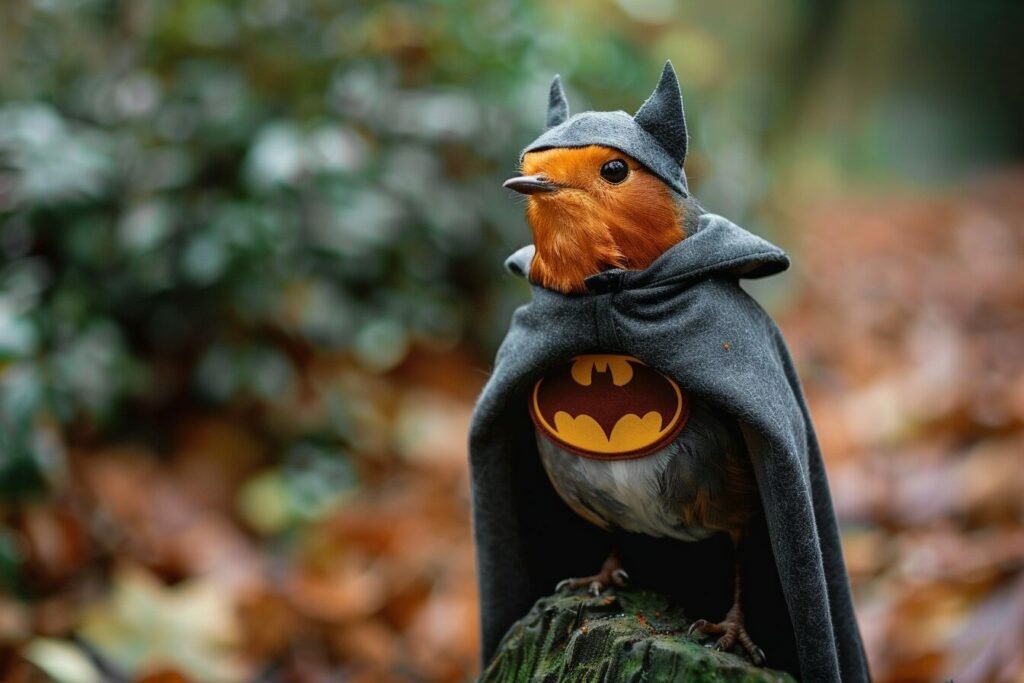
- Robins in Visual Arts: Artists have long been inspired by the beauty and symbolism of robins. These birds are often depicted in paintings and illustrations, where their bright red breasts add a splash of color and symbolize the vitality of nature.
- The Robin in Literature and Poetry: Robins have been featured in poetry and literature, often symbolizing innocence, transformation, or the beauty of the natural world. Their portrayal is typically positive, highlighting their status as beloved creatures of the wild.
- Robin Hood – The Legendary Outlaw: The story of Robin Hood, while not directly related to the bird, incorporates the robin as a symbol of heroism and benevolence. The name ‘Robin’ in this context represents a figure who is cunning, brave, and fights for justice.
- Batman and Robin – The Dynamic Duo: In the world of comic books and movies, Robin is the famed sidekick of Batman. This character, though human, embodies attributes often associated with the bird – agility, intelligence, and a bright presence, akin to the robin’s red breast. The ‘Robin symbol’ in this context has become iconic, representing bravery and partnership.
- Cultural and Symbolic Representation: The portrayal of robins in various art forms and popular culture reflects their enduring appeal and symbolic significance. They are seen as messengers of hope, symbols of new beginnings, and embodiments of joy and vitality.
The Spiritual Meaning of Seeing a Red Robin
Encountering a red robin is often perceived as more than a mere sighting of a bird; it is imbued with spiritual significance and symbolism. Across different cultures and belief systems, seeing a red robin can hold various spiritual meanings.
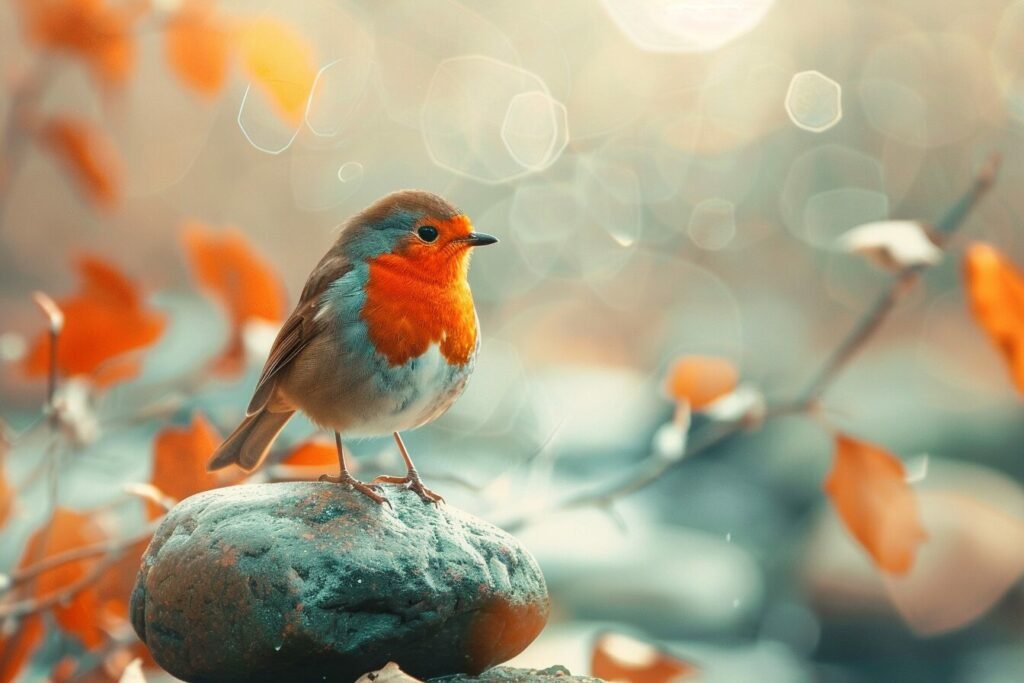
- A Sign of Good Fortune: In many spiritual beliefs, seeing a red robin is considered a sign of good luck and prosperity. It is thought to be a positive omen, indicating that good things are on the horizon.
- Messenger from the Spiritual Realm: The red robin is frequently seen as a messenger from the spiritual world. Its appearance might be interpreted as a sign from a deceased loved one or a spiritual guide, offering comfort and reassurance.
- Symbol of Renewal and New Beginnings: Spiritually, the red robin is often associated with renewal and new beginnings. Its sighting can be interpreted as an encouragement to start afresh or to embrace a new phase in life with optimism.
- Connection to Inner Self and Intuition: The red robin is sometimes seen as a symbol of connecting with one’s inner self and intuition. Its presence might encourage individuals to trust their instincts and inner wisdom.
- Answering the Question: Addressing the question, “what does it mean when a bird visits you,” the appearance of a red robin specifically can be a powerful and uplifting experience, often interpreted as a sign of transformation, hope, and spiritual guidance.
Understanding the Red Robin’s Life and Behavior
The life and behavior of the red robin are as fascinating as its symbolism. Understanding these aspects provides a deeper appreciation of why this bird holds such a special place in various cultures and belief systems.
- Migratory Patterns: The red robin is known for its migratory behavior. Many robins migrate to warmer areas during the winter and return in the spring, symbolizing renewal and change. For more on their migration patterns, visit: When Do Robins Migrate.
- Nesting Habits: Robins are unique in their nesting habits, often reusing or building upon old nests. This behavior symbolizes resourcefulness and adaptability. Learn more about their nesting habits at: Do Robins Reuse Their Nests.
- Impact of Weather Conditions: Weather conditions significantly affect robin behavior. They are adaptable birds, adjusting their feeding and mating habits based on the weather. To understand how weather impacts robins, read: How Do Weather Conditions Affect Robin Behavior.
- Diet and Feeding: The diet of a robin is diverse, consisting of insects, worms, and fruits. Their feeding habits, particularly their iconic way of hunting for worms, are fascinating to observe. For more on what robins eat, check: What Do Robins Eat.
- Interaction with Humans: Robins often exhibit a lack of fear around humans, making them a common visitor in gardens and public parks. They can become quite tame and may even respond to humans feeding them.
- Symbolic Representation in Life and Behavior: The red robin’s life and behavior mirror many of the symbolic meanings attributed to it, such as adaptability, renewal, and the joy of living.
How to Draw a Robin Symbol
Drawing a robin symbol can be a fun and creative way to connect with the symbolism of this beloved bird. Whether you’re an experienced artist or a beginner, these simple steps will guide you in creating your own robin symbol.
- Start with Basic Shapes: Begin by drawing a small circle for the head and a larger oval for the body. These basic shapes will form the foundation of your robin.
- Add the Beak and Tail: Draw a small triangle protruding from the circle to represent the beak. For the tail, sketch a series of short, angled lines extending from the back of the oval.
- Outline the Wings and Legs: Add a wing by drawing a curved line from the top of the body. Sketch two thin legs with small feet at the bottom of the oval.
- Detailing the Robin: Inside the head circle, add two small circles for eyes. You can fill in the beak and add a few lines to suggest feathers on the wing and tail.
- Coloring Your Robin: Robins are known for their distinctive red breast. Color the lower half of the body with a bright red or orange shade, and use brown or grey for the rest of the body.
- Adding Background: If you wish, you can add a simple background like branches or leaves to place your robin in a natural setting.
- Final Touches: Review your drawing and add any final details or adjustments. You can use shading to give your robin a more three-dimensional appearance.
Symbolism of the Red Robin
In summary, the red robin is not just a symbol of hope, joy, and renewal, but also a living example of nature’s beauty and resilience. Its presence in our lives, whether physical or symbolic, serves as a reminder of the wonder and mystery that surrounds us.
